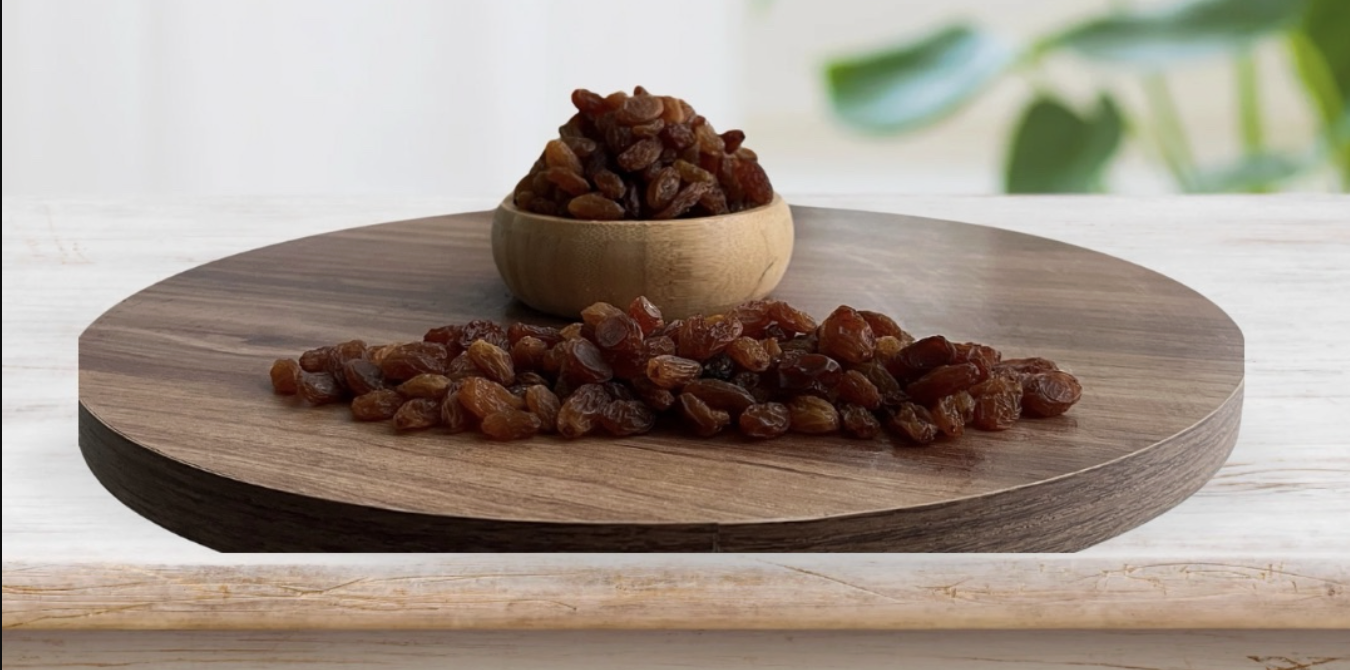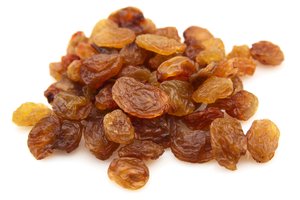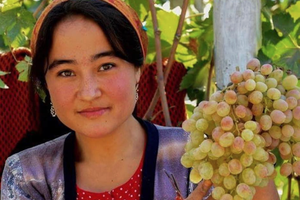The Rise of Organic Dried Grapes in the Natural Consumption Trend
1. Introduction: The Rise of Organic Dried Grapes in the Natural Consumption Trend
In recent years, as consumers have become increasingly conscious about their health, interest in natural and healthy products has grown significantly. Especially snacks that contain no additives, have high nutritional value, and are naturally processed have become an essential part of daily nutrition. In this context, organic dried grapes stand out as a superfood that attracts attention with their nutrient-rich profile and easy accessibility. However, for this valuable product to reach our tables in its healthiest and highest-quality form, not only production but also proper packaging is of great importance.
In the food industry, the question “how to extend shelf life?” is a crucial topic, especially regarding dried fruit storage conditions. Maintaining the product’s freshness, aroma, and nutritional content over time is not only key to consumer satisfaction but also to export success. Research clearly shows that choices in dried grape packaging directly affect product quality. Therefore, natural food packaging processes are not merely logistical operations but strategic quality practices.
2. What Are Organic Dried Grapes and Why Are They Preferred?
Organic dried grapes are produced by naturally drying grapes that are grown without the use of chemical fertilizers, pesticides, or hormones. In grape-producing countries like Turkey, especially the Sultani seedless grape variety stands out in organic production. Known for its aroma and rich nutritional content, this grape becomes even healthier and safer when processed through organic drying methods.
One of the main reasons why consumers prefer organic products in their search for healthy snacks is that these products contain no pesticide residues and are non-GMO. Additionally, organic dried grapes are a powerful source of natural sugars, dietary fiber, antioxidants, and compounds that support immune health—making them a premium option within the dried fruits category.
Moreover, since organic farming practices protect soil health, support biodiversity, and prevent water pollution, organic dried grapes are considered not only a healthy choice for individuals but also a sustainable choice for the planet.
3. Packaging: Not Only Aesthetic, But the Key to Quality
In the food industry, packaging is not just a design element that enhances the visual appeal of the product; it is also a strategic factor that directly affects the product’s shelf life, freshness, and safety. Especially for natural, additive-free products like organic dried grapes, choosing the right packaging plays a critical role in preserving quality.
Scientific studies have shown that physical properties such as oxygen and moisture permeability of packaging materials have a significant impact on dried fruit storage conditions. For example, airtight, multilayer, and light-proof packaging slows down oxidation, prevents color darkening, and offers an effective answer to the question: “How to extend shelf life?”
Furthermore, hygienic packaging isolated from harmful microorganisms increases the product’s microbial safety. This provides a major advantage for conscious consumers who prefer healthy and natural snacks. Ultimately, packaging is not only about convenience in transportation and storage but also a tool that ensures trust, quality, and sustainability.
4. Comparison of Dried Grape Packages (Quadro, Kraft Box, etc.)
In organic dried grape production, sustainability of quality is just as important as production quality itself. Packaging types play a decisive role here. In a 9-month scientific study, the effects of different package types (Quadro, Kraft Box, Doypack, Lunch Box, Pillow Pack) on dried grapes were evaluated. The findings revealed that the correct choice of natural food packaging directly affects product quality.
🔹 Quadro Packaging
Made from PET and oriented polypropylene (CPP), this lightweight yet functional packaging showed the highest moisture retention (15.19%), which kept the grapes softer and fresher. This packaging type answers the question “How to extend shelf life?” by maintaining ideal water activity levels, thus supporting microbial safety.
🔹 Kraft Box
Although it has a natural and eco-friendly appearance, this packaging had the lowest moisture level (13.55%), causing the grapes to dry out faster and lose flavor and aroma. The high moisture permeability negatively affects long-term shelf life.
🔹 Doypack and Pillow Pack
Both are multilayer structures offering strong protection. Their water activity values were close to those of Quadro, helping to minimize color and flavor loss. These packaging types are ideal for export markets and supermarket shelves.
🔹 Lunch Box
While more economical and suitable for small portions, it provides moderate performance in protecting product quality. Ideal for short-term storage.
These comparisons clearly demonstrate that packaging is not just about external appearance; rather, the technological layers within the packaging determine the quality and commercial value of the product.
5. How to Extend Shelf Life? Scientific Findings & Practical Recommendations
One of the major challenges with natural, additive-free products like organic dried grapes is maintaining freshness and nutritional properties over time. This brings us to a fundamental question: How to extend shelf life? The answer lies in optimizing both packaging technologies and storage conditions.
According to scientific research, water activity (aw value) and moisture content are critical for microbial safety and physical integrity. For example, grapes stored in Quadro packaging had an aw value of about 0.55, a level that minimizes mold formation—an important advantage for export products.
🔍 Practical Recommendations
- Choose packaging with low moisture permeability (e.g., multilayer PET+AL+PE).
- Use light-protective structures to prevent UV-induced oxidation.
- Store the product at 20±1°C, with 50–65% humidity.
- Prefer natural pest-control methods such as CO₂ treatments before packaging.
- For fast-moving products, thinner and more eco-friendly packages (like lunch box) are suitable for short consumption periods.
These practices not only preserve quality but also strengthen brand trust and consumer loyalty. Additionally, SEO-wise, content providing detailed information on dried fruit storage conditions often attracts high user engagement.
6. The Healthiest Choice for Consumers: Which Packaging Should You Prefer?
When choosing between different dried grape packages on store shelves, consumers should pay attention not to aesthetics alone but to the protective properties of the packaging. The key consideration is whether the packaging preserves freshness, nutritional value, and safety.
Research shows that Quadro packaging maintains ideal moisture and water activity levels throughout shelf life, making it the healthiest option for organic dried grapes. Its low light permeability helps prevent oxidative degradation.
On the other hand, eco-conscious consumers may prefer kraft box packaging; however, its high moisture permeability may lead to faster drying and flavor loss. It is suitable for short-term consumption but not ideal for long-term storage.
In summary, consumers looking for healthy snacks should select airtight, moisture-proof, multilayer, and light-protective packaging to maintain the high quality of organic dried grapes.
7. Conclusion & Recommendations: The Future of Healthy Snacks
Organic dried grapes are not only delicious snacks but also represent a healthy, nutritious, and eco-friendly lifestyle. Preserving this value requires not just proper production but also correct packaging and storage conditions.
Scientific findings clearly show that Quadro packaging keeps moisture and water activity at optimal levels, offering the most effective extended shelf life for organic dried grapes. This provides significant advantages for both consumer health and commercial sustainability. On the other hand, some packaging types—such as kraft boxes—show limited performance in preserving quality.
✅ In Summary:
- Packaging choice is a key factor determining product quality in organic dried grapes.
- Extended shelf life is achieved with the right packaging and appropriate storage conditions.
- Consumers should read packaging details carefully and choose protective packaging.
- For brands, packaging is not merely a marketing tool—it is the guarantee of product quality.
The relationship between food safety, consumer awareness, and packaging technologies will continue to shape the future of the healthy snack market. Organic dried grapes are positioned to become one of the leading products in this evolution.




